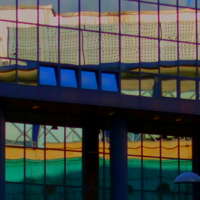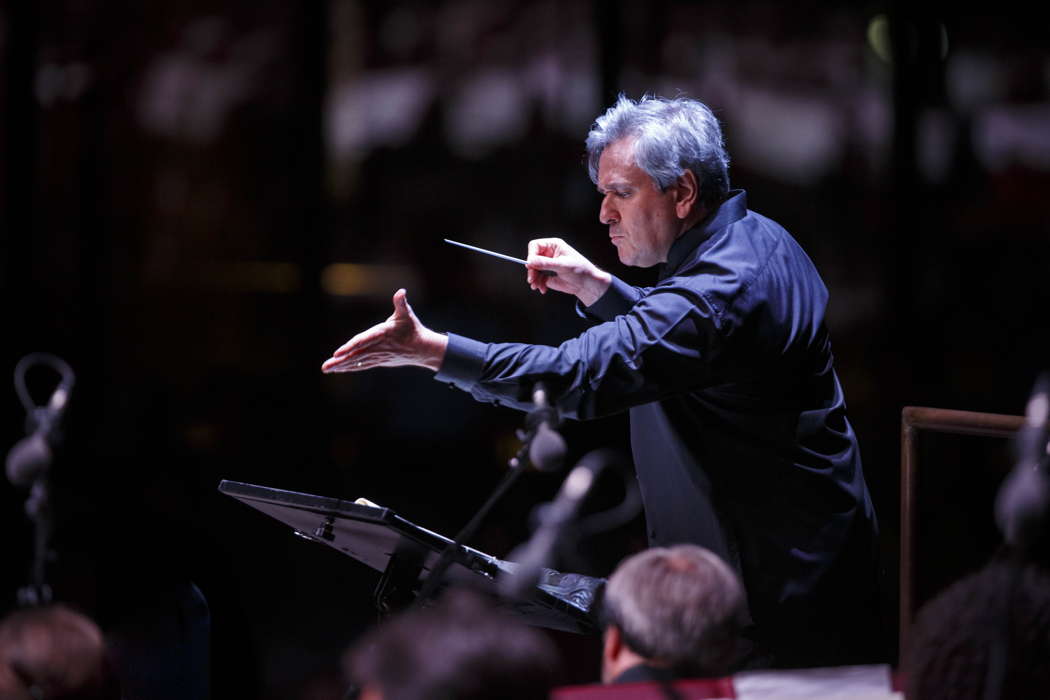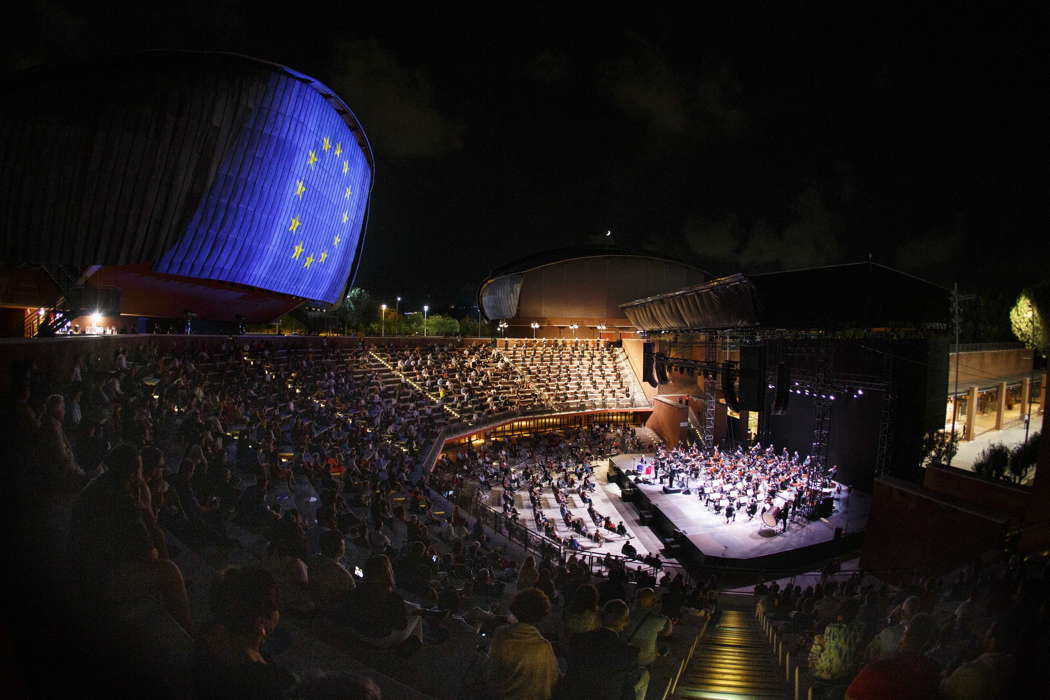- Pyotr Ilyich Tchaikovsky
- Benjamin Frith
- Derek Murray
- Gerhard Schedl
- Sergio Rendine
- Ainārs Rubiķis
- LSO St Luke's
- Silent Night
 DISCUSSION: John Dante Prevedini leads a discussion about Composers, individuals or collective?, including contributions from David Arditti, Halida Dinova, Robert McCarney and Jane Stanley.
DISCUSSION: John Dante Prevedini leads a discussion about Composers, individuals or collective?, including contributions from David Arditti, Halida Dinova, Robert McCarney and Jane Stanley.
 CENTRAL ENGLAND: Mike Wheeler's concert reviews from Nottingham and Derbyshire feature high profile artists on the UK circuit - often quite early on their tours.
CENTRAL ENGLAND: Mike Wheeler's concert reviews from Nottingham and Derbyshire feature high profile artists on the UK circuit - often quite early on their tours.
Pappano's 'Ninth'
GIUSEPPE PENNISI reports on Beethoven from Rome's Parco della Musica
As announced in this magazine on 25 June - see After the Pandemic - the National Academy of Santa Cecilia has reopened the doors of the symphonic season. It started with a festival dedicated to the two hundred and fiftieth anniversary of Ludwig van Beethoven's birth: five concerts in the Cavea of the Parco della Musica (from 9 to 24 July) where music director Antonio Pappano led the ensembles of the Academy in Beethoven's complete symphonies.
Not being able to follow the entire cycle, I went to the final concert. The 'sold out' signs had been on for days. The Ninth Symphony was performed. It is usually called 'choral' but in the score Beethoven posted the title 'allemande', to emphasize how his was German art, even though he had been residing in Vienna for decades.
The Ninth Symphony appeared as a revolutionary work from its first performance, not only because of the presence of the voices and the choir, but because it undermined the very concept of symphony. The Ninth is a grandiose architecture in which Beethoven brings together other musical genres: operatic style, military music, 'Turkish' exoticism and polyphonic writing typical of sacred music. The grandeur of the conception determined the subsequent evolution of romantic symphonic music until Mahler. In this symphony, Beethoven returns to the heroic style of the 'Third' and experiences his bold innovations. One of the most important innovations is the overcoming of the sonata scheme with two opposing themes for a more complex elaboration that not only puts different materials into play but juxtaposes more than two themes.
In the last movement, the impulse to sing finds its outlet and materializes in the inclusion of the solo voices and the choir, breaking the barriers of the symphonic genre. The movement winds through very marked and sharply contrasting sections until the triumphant conclusion.
In the Spring of 2019, I listened to the Ninth in a performance in which the Santa Cecilia performing groups were directed by Kirill Petrenko - see Petrenko's Highly Dramatic Ninth, 6 April 2019. It seems, therefore, almost natural to compare Pappano's reading with that of the younger Petrenko, also because both have a great experience of operatic music.

Antonio Pappano conducting Beethoven's Ninth on 24 July 2020. Photo © 2020 Musacchio, Ianniello and Pasqualini
Two readings, at the same time philological and very personal. As is often said in musical encyclopaedias, in the Ninth, Beethoven takes the symphonic structure formalized by Haydn and adds the voice to it, but in addition, he launches a tense challenge towards the future, changing the symphonic syntax: the Scherzo precedes the Adagio instead of following it. Wagner spoke of liquidation, with the 'Ninth', of the very form of symphony and purely instrumental music and, therefore, as the starting point of the symphonism as an integral part of the 'music drama' of which both Petrenko and Pappano are masters.
Unlike chiselled and manicured readings (such as, for example, Solti's with Chicago groups immortalized in a Decca recording from as far back as 1966), or heroic ones (such as von Karajan's), both Petrenko and Pappano offer highly dramatic interpretations. The one is more Teutonic while that of the second is full of Mediterranean aura, like the wind that on the evening of 24 July 2020 tempered the Roman heat and made the Cavea of the Parco della Musica very pleasant. Petrenko has wide arms and conducts with the whole body while Pappano has a contained and much focused gesture.
The salient aspect is the net standoff between the first three movements and the fourth. Many conductors see the first three movements as a synthesis of Beethoven's previous symphonic works, Pappano reads the first three movements as filtered by memory, as a recollection (of the author) of those had been his previous symphonies, a reminder all the more necessary as he prepared to launch himself on a ground unexplored. You can feel it from the first chord. The first movement, Allegro ma non troppo maestoso is read almost like a sea storm. The second, Molto vivace, as a moment of sun. The third, Adagio molto e cantabile is languid and passionate. Joy explodes in the Schillerian anthem in which the choir and soloists - Maria Agresta, Sara Mingardo, Saimir Pirgu and Vito Priante - blend their voices with the orchestra. The choir is located on the first steps of the left side of the Cavea - with great stereophonic effects.

Beethoven's Ninth Symphony on the steps of Rome's Parco della Musica on 24 July 2020. Photo © 2020 Musacchio, Ianniello and Pasqualini
Pappano's conducting is spectacular. This was a huge success, crowned by ten minutes of ovations.
Copyright © 30 July 2020
Giuseppe Pennisi,
Rome, Italy

FURTHER INFORMATION ABOUT LUDWIG VAN BEETHOVEN
FURTHER LIVE CONCERT AND OPERA REVIEWS


